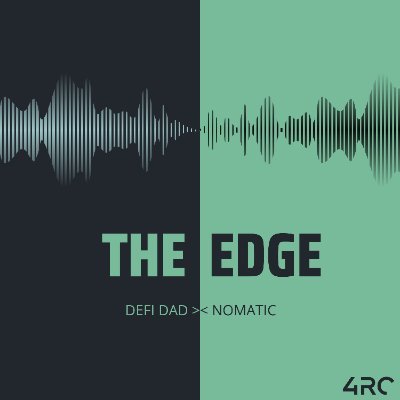In this episode of The Edge Podcast which took place on March 22, 2024, DeFi Dad, Nomatic, Mike, and Ismael discuss ether.fi, Lagrange, and the partnership between the two protocols. Read our notes below to learn more.
Background
- DeFi Dad (Host) – Host of Edge Podcast
- Nomatic (Host) – Co-Host of Edge Podcast
- Mike (Guest) – Co-Founder of ether.fi
- Ismael (Guest) – Founder of Lagrange
- ether.fi – at liquid restaking protocol
- Lagrange – generalizable, non-interactive cross-chain state proofs.
What is Lagrange building?
- Ismael says that Lagrange is a hyperparallel, hyperscalable ZK coprocessor. It builds applications on-chain, offloading intensive computations to nodes off-chain for execution, generating proofs, and verifying results back on-chain. Lagrange aims to run large computations efficiently in a distributed and decentralized manner primarily serving Ethereum and other EVM-compatible chains.
What is ether.fi?
- Mike says that ether.fi is a next-generation staking protocol offering liquid receipt tokens for $stETH with enhanced non-custodial features. Users receive staking rewards, restaking rewards, and points that can be utilized in DeFi by staking $ETH and obtaining $ETH liquid restaking tokens.
What does this restaking commitment mean?
- DeFi Dad says that ether.fi commits $500 million of natively restaked $ETH to operators of Lagrange’s parallel ZK co-processor for zero-knowledge proving on Ethereum.
- Ismael says that the importance lies in establishing economic security through delegation to ensure timely delivery of zero-knowledge proofs enhancing user experience and utility.
- He adds that the introduction of ZK restaking signifies the practical application of zero-knowledge proofs for fluid consumption within applications ensuring timely delivery from Lagrange approving system deployed across networks.
Choosing to work with Lagrange
- Mike says that the pooled security model within EigenLayer involves every $ETH securing multiple AVS. Lagrange is one of the AVS secured by $ETH within ether.fi, aiming for aggregate yield from all AVS. Commitment to a pooled security model ensures support for all collaborating AVS.
- He adds that initial implementation lacks slashing and fee distribution mechanisms, reducing risks. Security measures like anti-slash committees and beacon chain deposit contract mitigate potential threats. Expected yield may offer a modest increase in staking rewards but not extravagant returns.
- Ismael says that Lagrange operates as a protocol on top of EigenLayer with security provided by entities like ether.fi. They put emphasis on independent operators forming relationships based on delegation within the core protocol design.
- He adds that Lagrange partnership is non-exclusive, allowing collaboration with other LRTs for shared security benefits.
What’s possible to build with Lagrange?
- Ismael says that off-chain databases can store NFT data, metadata, and ownership details for various applications. Utilizing off-chain data for on-chain operations allows for actions like offering discounts based on specific NFT ownership or implementing loyalty reward programs within protocols.
- He adds that compute over data is essential for various functions such as options protocols to calculate asset volatility and issue options securely on-chain. Co-processors enable secure computation over large datasets directly on-chain, eliminating the need for off-chain oracles and enhancing security in tasks like yield aggregation. Enhancing strategies within protocols by transitioning from basic to smart strategies through direct on-chain computations offers increased flexibility and security.
Defining pooled security
- Mike says that pooled security involves using a shared pool of assets, such as $ETH, to secure multiple aspects of a network beyond just Ethereum itself. Initial stages focus on establishing robust security measures without immediate concerns about slashing risks; however, future developments will address potential risks comprehensively. Analogous to an insurance model, pooled security operates by leveraging collective assets to mitigate risks across various network components efficiently.
- He emphasizes the criticality of survival over maximizing rewards to avoid being completely slashed to zero. He advocates for a hyper-conservative approach post-normalization, working only with reliable, audited AVS and avoiding excessive risk-taking. Survival is paramount, leading to a plan to be the “boring LRT” amidst potentially risky counterparts.
- Ismael highlights the significance of working with partners who prioritize strong auditing, organization, and academic roots to prevent adverse impacts on network security. He emphasizes aligning with partners valuing similar AVS standards and deep engineering fundamentals for enhanced protocol robustness.
- He mentions ongoing discussions on insurance models within the industry, anticipating further developments as slashing mechanisms are activated. He foresees a refinement in LRT strategies post-slashing activation to maximize risk-adjusted returns and enhance liquidity efficiency for various token projects.
Why $500M?
- Ismael says that calculus in zero-knowledge proofs involves dealing with computations that have near-infinite bounds, impacting safety and liveness. Safety in zero-knowledge proofs is primarily based on mathematics, ensuring the accuracy of computations unless a bug occurs in the circuit. Liveness is crucial for zero-knowledge proofs; if a prover fails, downstream processes relying on that proof are compromised.
- He adds that guaranteeing timely service of zero-knowledge proofs is essential to prevent potential value loss scenarios like sudden price drops. The need for robust guarantees against liveness attacks underscores the significance of setting thresholds higher than potential attack returns.
Will ether.fi use Lagrange tech?
- Mike says that ether.fi staking involves a rebasing functionality that recalculates the value of tokens daily based on the amount of $ETH in the system. It utilizes oracles for valuation, with a desire to explore alternatives like Granch for improved efficiency.
- He adds that ether.fi allows utilizing restaked assets in DeFi applications. It enables users to engage in various DeFi activities such as liquidity pool participation, borrowing, lending autonomously without fund manager intervention.
Check out these important links
- Watch the YouTube Video
- Follow DeFi Dad on Twitter
- Follow Nomatic on Twitter
- Follow Mike on Twitter
- Follow Ismael on Twitter
Show Information
- Medium: YouTube (Video)
- Show: The Edge Podcast
- Show Title: The EigenLayer Restaking Marketplace Emerges!
- Show Date: March 22, 2024

